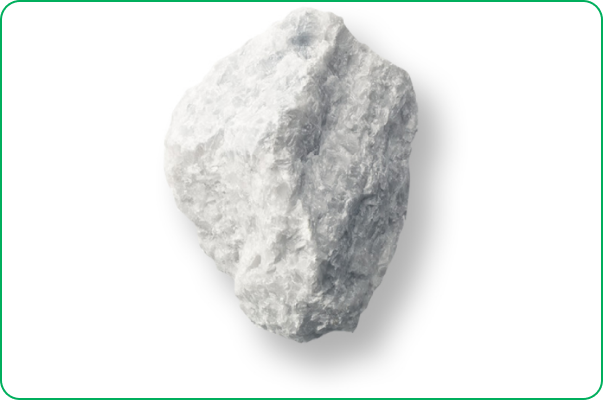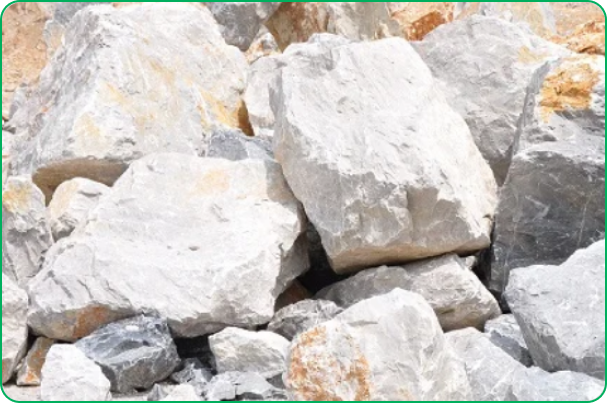
LIMEX™ sheet is manufactured by T-die sheet extrusion of the molten composite, and stretching process controlling a porous structure in order to create whiteness and lightness. Next, a specific coating agent is applied onto the surface of LIMEX™ sheet depending on its application, enhancing surface properties for various kinds of printing process. Stone paper and LIMEX™ Sheet are different products.
LIMEX™ pellet is manufactured by pelletizing, the process of moulding the molten composite into the shape of a pellet. LIMEX™ pellet is also manufactured by pelletizing edge waste produced through manufacturing and printing process or used LIMEX™ sheets collected from consumers. Since the amount of petroleum-based resin contained in conventional plastic products can be reduced, LIMEX™ is used as a material to “reduce plastic”.
LIMEX™ is an advanced sustainable material produced from calcium carbonate (CaCO3), which is derived from limestone, and a small amount of polymeric resin added as a binder. These materials are heated and kneaded in a twin screw extruder, creating a molten, homogeneous composite containing over 50% calcium carbonate by body weight. Next, the composite is heated and pressurized treated under LIMEX™’s proprietary manufacturing process, resulting in material properties ideal for post-processing.
LIMEX™ is versatile, accommodating a variety of moulding techniques such as injection, extrusion, vacuum, and blow moulding. As a composite material, LIMEX™ seamlessly integrates with standard equipment, allowing for processing through conventional methods and machinery.

